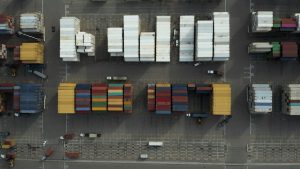Securing payments from Brazilian importers of electrical goods requires a thorough understanding of both the legal framework and the practical strategies available for debt recovery. The process involves navigating international trade laws, assessing the financial viability of debtors, and potentially engaging in litigation. This article outlines the crucial steps and considerations for companies seeking to ensure they are compensated for their exports to Brazil.
Key Takeaways
- Understanding Brazil’s import regulations and international trade agreements is essential for securing payments and knowing your legal standing.
- Assessing the debtor’s financial status and the likelihood of successful recovery helps determine the most appropriate action, be it case closure or litigation.
- Litigation should be considered after a thorough investigation and if the debtor’s assets suggest recovery is possible, despite the associated upfront legal costs.
- Effective debt collection strategies involve initial communication, skip-tracing, and leveraging attorney involvement to increase pressure on the debtor.
- Collection service fees vary based on claim quantity, age, and whether legal action is required, with competitive rates offered for multiple claims.
Understanding the Legal Framework for Securing Payments
Brazilian Import Regulations for Electrical Goods
Navigating the complexities of Brazilian import regulations for electrical goods is crucial for securing payments. Compliance with local standards is non-negotiable; importers must adhere to the National Institute of Metrology, Quality and Technology (INMETRO) certifications.
- Ensure products meet INMETRO requirements
- Acquire necessary import licenses
- Stay updated with changes in regulations
Understanding these regulations helps mitigate risks of non-payment due to non-compliance. It’s essential to establish clear contractual terms that reflect these regulatory demands.
Payment security hinges on the alignment of trade practices with Brazilian legal standards.
Securing payments from Brazilian importers of electrical goods involves a comprehensive recovery system with varying debt collection rates and legal actions. Effective communication is key for successful fund recovery.
International Trade Agreements and Their Impact
When securing payments from Brazilian importers, understanding the impact of international trade agreements is crucial. These agreements often dictate the terms of trade, including payment methods and compliance with specific regulations. Brazil’s adherence to these agreements can significantly influence the resolution of trade disputes.
The legal framework for USA-Brazil trade disputes involves various aspects such as payment methods, compliance with international trade laws, and regulations on environmental technology. This framework is designed to prevent disputes and ensure their efficient resolution. For electrical goods importers, it’s essential to be aware of these regulations to mitigate risks associated with payment security.
By aligning with international trade standards, Brazilian importers and exporters can facilitate smoother transactions and reduce the likelihood of legal complications.
Understanding these agreements helps in anticipating potential challenges and formulating strategies for debt recovery, should the need arise.
Legal Recourse for Unpaid Debts in Brazil
When Brazilian importers of electrical goods fail to fulfill payment obligations, legal recourse is a critical step. The Brazilian legal system provides mechanisms to enforce payment, but navigating this terrain requires understanding the specifics of local laws.
- Initiate a formal demand for payment through legal notice.
- File a lawsuit in the appropriate Brazilian court.
- Seek enforcement of any existing security interests or liens.
It’s essential to assess the debtor’s ability to pay before proceeding with legal action. This involves investigating assets and financial stability. If the likelihood of recovery is low, it may be prudent to consider case closure. Conversely, if the debtor has the means, litigation could be the most effective path.
The decision to litigate should be weighed against the potential costs and the debtor’s financial landscape.
Remember, prevention is better than cure. Employ strategies for preventing non-payment issues in international trade, such as conducting due diligence on Brazilian importers, establishing clear payment terms in contracts, and utilizing trade finance instruments for secure transactions.
Assessing the Viability of Debt Recovery
Investigating the Debtor’s Financial Status
Before initiating recovery efforts, a thorough investigation of the debtor’s financial status is paramount. The first phase of our 3-Phase Recovery System involves skip-tracing and gathering comprehensive financial and contact information. This data serves as the foundation for informed decision-making and strategic action.
- Initial contact attempts include a series of letters and persistent communication through various channels.
- If these attempts fail, the case escalates to Phase Two, involving legal correspondence and further attempts to engage the debtor.
The goal is to assess the viability of recovery before proceeding to more drastic measures. If the likelihood of successful recovery is low, we recommend case closure, ensuring no additional costs are incurred.
In the event of a positive outlook, the next step may involve litigation, with associated upfront costs. It’s crucial to weigh the potential gains against these expenses to make a judicious decision.
Determining the Likelihood of Successful Recovery
Assessing the potential for successful debt recovery hinges on a meticulous evaluation of the debtor’s financial landscape. A thorough investigation of the debtor’s assets is crucial to gauge the feasibility of recouping owed funds. If the likelihood of recovery is low, a recommendation for case closure may be prudent, sparing unnecessary expenditure.
Financial status and asset analysis provide a clear picture of the debtor’s ability to pay. Consideration of the following factors is essential:
- Age of the account
- Total amount owed
- Debtor’s payment history
- Existence of any legal or financial obstacles
The decision to litigate should be weighed against the probability of recovery and the associated costs. If the odds are unfavorable, it may be more strategic to cease further action.
Ultimately, the choice to pursue litigation or to close the case rests with the creditor, informed by the recovery assessment and potential costs involved.
Recommendations for Case Closure or Litigation
After a comprehensive assessment of the case, including the debtor’s financial status and the likelihood of recovery, a decisive recommendation is made. Decisive actions include case closure or litigation based on the debtor’s assets and recovery likelihood.
When the possibility of recovery is low, case closure is advised to avoid unnecessary expenses. Conversely, if the debtor’s assets suggest a favorable outcome, litigation may be the path forward.
The decision to litigate requires consideration of upfront legal costs, which typically range from $600 to $700. These costs cover court fees and filing expenses. Should you opt for litigation, our affiliated attorney will initiate legal proceedings to recover the full amount owed, including the cost of filing the action.
Here is a brief overview of potential fee structures for collection services:
- Accounts under 1 year: 30% (1-9 claims) or 27% (10+ claims) of the amount collected.
- Accounts over 1 year: 40% (1-9 claims) or 35% (10+ claims) of the amount collected.
- Accounts under $1000.00: 50% of the amount collected.
- Accounts requiring legal action: 50% of the amount collected.
The Litigation Process and Associated Costs
Decision Making for Legal Action
When faced with unpaid debts from Brazilian importers, the decision to initiate legal action requires careful consideration. Assess the potential for recovery against the costs involved. If the due diligence indicates low recovery prospects, case closure may be the prudent choice. Conversely, if litigation seems viable, be prepared for upfront costs.
Upfront legal fees are a critical factor in your decision. These typically range from $600 to $700, depending on the jurisdiction. A detailed breakdown of these costs should be provided before proceeding. Remember, unsuccessful litigation means closure without additional fees to our firm or affiliated attorney.
The guide emphasizes due diligence and recovery strategies before litigation in USA-Brazil trade disputes. Legal costs range from $600-$700 with recovery rates varying based on claim volume.
Consider the following steps:
- Evaluate the debtor’s financial status and the strength of your case.
- Review the estimated legal costs and compare them with the potential recovery amount.
- Decide whether to proceed with litigation or continue with standard collection activities.
- If opting for legal action, ensure you understand the fee structure and potential outcomes.
Understanding Upfront Legal Costs and Fees
Before initiating legal action, it’s crucial to grasp the financial implications. Upfront legal costs are a pivotal factor in the decision-making process. These costs typically include court fees, filing charges, and may vary depending on the jurisdiction of the debtor. Expect to budget between $600 to $700 for these initial expenses.
Transparency in fee structures is essential. Our affiliated attorneys will provide a detailed breakdown of potential costs before proceeding. This ensures that you are fully informed and can weigh the cost against the potential recovery.
The decision to litigate should balance the upfront investment against the likelihood of debt recovery.
Remember, if litigation does not result in debt recovery, the case will be closed with no additional charges from our firm or the affiliated attorney. This risk assessment is a critical step in managing your financial exposure.
Outcomes of Unsuccessful Litigation Efforts
When litigation fails to secure payment from Brazilian importers of electrical goods, the financial repercussions can be significant. The sunk costs of legal action, including court fees and attorney expenses, often range from $600 to $700. These initial costs underscore the importance of a thorough pre-litigation assessment of the debtor’s ability to pay.
- If recovery is deemed unlikely, case closure is advised to avoid further losses.
- Continued standard collection activities may be pursued without additional legal fees.
- Unsuccessful litigation leads to case closure with no further obligations to the firm or affiliated attorney.
The decision to litigate should be weighed against the potential for recovery and the associated upfront costs. Failure to collect not only results in lost revenue but also wasted resources that could impact your business’s bottom line.
Debt Collection Strategies and Techniques
Initial Contact and Communication with Debtors
The first interaction with a debtor can set the tone for the entire recovery process. Effective communication is key in establishing a professional yet firm stance. It’s essential to convey the seriousness of the situation while leaving room for negotiation.
Persistence in follow-ups is crucial. A structured approach, as seen in our 3 phase Recovery System, ensures consistency. The initial phase involves multiple contact methods, including letters, calls, and electronic communications, aiming to resolve the matter amicably.
The goal is to achieve a resolution before escalating to more intensive recovery methods or legal action.
If initial attempts are unsuccessful, the process transitions to involving legal counsel, where the communication becomes more formal and authoritative. This step is not taken lightly, as it can increase costs and time invested.
Skip-Tracing and Investigative Measures
When traditional contact methods fail, skip-tracing becomes a pivotal tool. It’s a detective-like process to locate debtors who have ‘skipped’ out on their financial responsibilities. By leveraging databases and public records, collectors unearth valuable information on the debtor’s whereabouts and assets.
Investigative measures complement skip-tracing by digging deeper into the debtor’s financial status. This dual approach ensures a comprehensive search, increasing the chances of successful debt recovery.
- Initial data gathering from public and private databases
- Analysis of debtor’s financial trails and asset ownership
- Strategic planning for contact and negotiation
A thorough investigation sets the stage for informed decision-making, guiding whether to pursue litigation or close the case.
The Role of Attorneys in Debt Collection
Attorneys play a pivotal role in the debt collection process, especially when amicable solutions fail. Legal expertise is crucial when navigating the complexities of Brazilian law and international trade agreements. A multi-phase approach is often adopted, starting with amicable collection efforts and escalating to legal action if necessary.
- Phase One involves initial contact attempts through various communication channels.
- Phase Two sees the case transferred to an attorney who intensifies the pressure with legal demands.
- Phase Three requires a decision on litigation, with associated upfront costs.
The decision to litigate should be made after thorough due diligence and assessment of the debtor’s financial status. Costs vary depending on the age and size of the debt, as well as attorney involvement.
Attorneys not only enforce payment through legal channels but also provide strategic advice to ensure the highest likelihood of recovery. Their involvement often signifies a serious escalation in recovery efforts, which can prompt debtors to settle their debts to avoid legal consequences.
Fee Structures and Rates for Collection Services
Competitive Collection Rates Explained
Securing payments from Brazilian importers of electrical goods involves understanding the collection rates that are both competitive and tailored to the claim’s specifics. The rates vary significantly based on the age and quantity of claims, ensuring that clients only pay for the success of the recovery efforts.
For a clear perspective, consider the following rate structure:
-
For 1-9 claims:
- Accounts under 1 year: 30% of the amount collected.
- Accounts over 1 year: 40% of the amount collected.
- Accounts under $1000: 50% of the amount collected.
- Accounts placed with an attorney: 50% of the amount collected.
-
For 10 or more claims:
- Accounts under 1 year: 27% of the amount collected.
- Accounts over 1 year: 35% of the amount collected.
- Accounts under $1000: 40% of the amount collected.
- Accounts placed with an attorney: 50% of the amount collected.
The goal is to align the cost of collection services with the complexity and effort required to recover the debt. This ensures a fair and incentivized structure for both the collection agency and the client.
Variable Rates Based on Claim Quantity and Age
Collection agencies often adjust their fees based on the quantity and age of claims. Bulk submissions can lead to reduced rates, incentivizing clients to consolidate their collection efforts. For instance, a single claim may carry a higher percentage fee than submitting ten or more claims at once.
-
For 1-9 claims:
- Under 1 year: 30%
- Over 1 year: 40%
- Under $1000: 50%
- With attorney: 50%
-
For 10+ claims:
- Under 1 year: 27%
- Over 1 year: 35%
- Under $1000: 40%
- With attorney: 50%
Older accounts typically attract higher fees due to the increased difficulty in recovery. Accounts less than a year old are charged at a lower rate compared to those over a year, reflecting the higher likelihood of successful collection.
It’s crucial for creditors to weigh the age of the debt against the potential recovery rate. A strategic approach can optimize the balance between cost and the probability of successful debt recovery.
Cost Implications for Accounts Requiring Legal Action
When litigation becomes the chosen path for debt recovery, understanding the cost implications is crucial. Exporters must meet Brazilian compliance standards to avoid payment delays and legal issues, which can escalate to legal action. The decision to litigate is not without its financial considerations.
Upfront legal costs, such as court costs and filing fees, typically range from $600 to $700, depending on the debtor’s jurisdiction. These are necessary expenditures to initiate the legal process. Should litigation efforts prove unsuccessful, the case will be closed, and no further fees will be owed to the firm or affiliated attorney.
Our fee structure is designed to align with the complexity and age of the account:
- Accounts under 1 year: 30% (1-9 claims) or 27% (10+ claims) of the amount collected.
- Accounts over 1 year: 40% (1-9 claims) or 35% (10+ claims) of the amount collected.
- Accounts under $1000.00: 50% of the amount collected.
- Accounts placed with an attorney: 50% of the amount collected.
Legal recourse for payment disputes involves phases and costs. Communication, legal procedures, and currency exchange impact payment collection in Brazil. It’s essential to weigh these factors against the potential recovery to make an informed decision.
Navigating the complexities of debt recovery can be challenging, but with Debt Collectors International, you have a partner that understands the intricacies of fee structures and rates for collection services. Our tailored solutions ensure that you only pay for successful collections, with no upfront fees. We invite you to explore our competitive rates and discover how our expertise can maximize your recoveries. Visit our website to get a free rate quote and start turning your receivables into revenue today.
Frequently Asked Questions
What are the legal frameworks for securing payments from Brazilian importers of electrical goods?
The legal frameworks include Brazilian import regulations for electrical goods, relevant international trade agreements, and local laws governing commercial transactions and debt collection.
How can I assess the financial status of a Brazilian debtor?
Assessing a debtor’s financial status involves skip-tracing and investigative measures to obtain the best financial and contact information available, and analyzing the debtor’s assets and creditworthiness.
What should I consider before deciding to initiate litigation against a Brazilian debtor?
Before initiating litigation, consider the likelihood of successful recovery, the debtor’s financial status, upfront legal costs, and the potential impact on your business relationships.
What are the upfront costs associated with legal action in Brazil?
Upfront legal costs typically range from $600.00 to $700.00, depending on the debtor’s jurisdiction, and cover court costs, filing fees, and other related expenses.
What happens if litigation attempts to collect from a Brazilian debtor fail?
If litigation attempts fail, the case will be closed, and you will owe nothing to the collection firm or the affiliated attorney.
What are the fee structures for collection services in cases involving Brazilian debtors?
Fee structures vary based on the number of claims, the age of the accounts, and whether the account is placed with an attorney. Rates can range from 27% to 50% of the amount collected.





